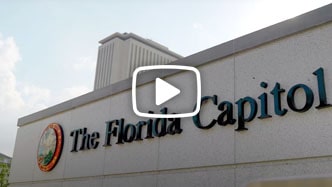Melbourne Storm Damage Lawyer
It seems like every year there is another major and potentially catastrophic hurricane that strikes Florida. If you own a home in Brevard County, you know it is important to always keep up to date with your homeowners’ insurance coverage. Of course, if a storm does strike, your insurer may not always be so eager to actually pay you what you are entitled to under your policy.
A qualified Melbourne storm damage lawyer can assist you in holding your insurance company accountable. At the Pendas Law Firm, we represent homeowners and other parties who need to file an insurance claim following a storm. We understand how difficult it is to rebuild your home and your life following a hurricane. And we will make every effort to ensure that your insurance company pays for every last penny of damage as set forth in your homeowners’ policy.
What Does Florida Homeowners’ Insurance Actually Cover?
Insurance claims are typically classified as either first- or third-party. A first-party insurance claim means the policyholder is filing a claim with their own insurer. A third-party claim, in contrast, is filed by someone against another policyholder. For example, if you are injured in a car accident caused by a negligent driver, you might file a third-party claim against that driver’s insurance carrier.
Most storm damage claims are first-party in nature. Many homeowners are required to carry a minimum amount of insurance on their properties. If you have a mortgage on your home, your lender will almost certainly require homeowners’ insurance to protect its investment. And if you live in an area governed by a homeowners’ or condominium association, the governing body may similarly require such insurance.
But it is important to note that not all homeowners’ insurance policies are created the same. Indeed, a homeowners policy usually includes several different types of “coverage,” each of which pertains to a different category of damages. These coverages are lettered “A” thru “F” as follows:
- Coverage A or “dwelling coverage” is the central coverage provided in most policies for damage to the actual structure of your home.
- Coverage B or “other structures coverage” covers buildings and structures that are on your property but separate from your home, such as a detached garage, swimming pool, shed, or fence.
- Coverage C or “personal property coverage” covers some of the cost of replacing any damaged belongings inside of your home. If you have specific items of exceptional value, those may need to be covered under a separate policy.
- Coverage D or “loss of use coverage” covers your additional living expenses while you are temporarily unable to live in your home. This includes housing expenses, additional food costs, and even income from any rental property you own.
- Coverage E and Coverage F deal with medical bills or property damage related to accidents on the insured property itself and are typically not involved in first-party storm damage claims.
Contact the Pendas Law Firm Today
Florida residents often assume that their insurance company will automatically cover all of their storm-related losses without question. But in reality, insurance companies often throw up a number of roadblocks in an attempt to minimize–or even deny–a potentially costly storm damage claim. That is why you need to work with a Melbourne first-party storm damage lawyer who is unequivocally on your side. Contact the Pendas Law Firm today to schedule an initial consultation with a member of our team.







